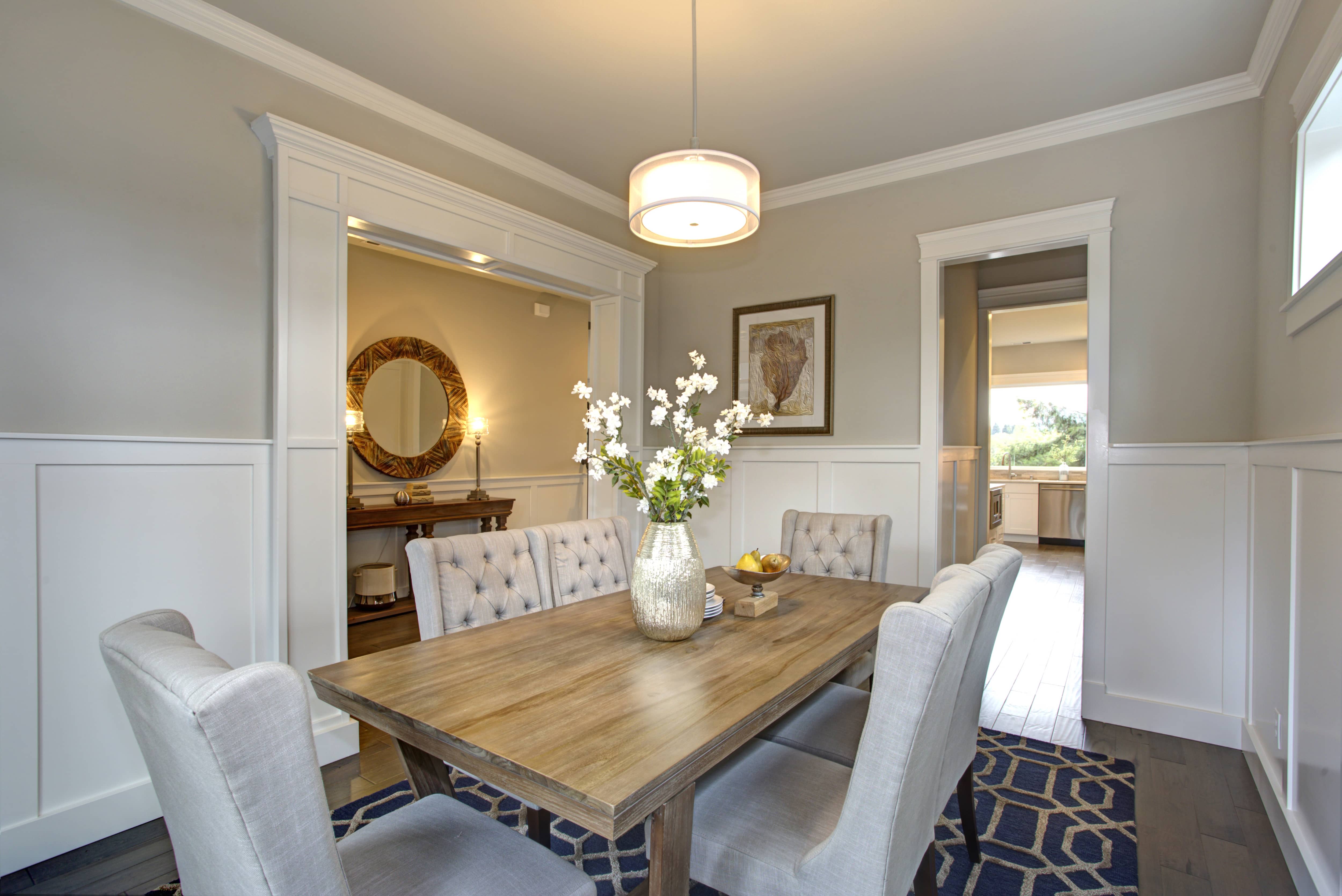MDF (Medium-Density Fiberboard) Pros, Cons & Uses
And why you should consider it for your next DIY project


If you’re a big DIYer, you’ve likely come across medium-density fiberboard—most commonly known as MDF. Perhaps you’ve put up an MDF shelf or created your own MDF trim. Maybe you’ve come across it and haven’t even realized it. After all, MDF mimics similar engineered woods. But what is it, exactly, and when should you use it for your home projects? Here’s everything you need to know about this popular, affordable wood product.
What Is MDF?
MDF is an engineered wood product made up of sawdust, dried wood shavings, and glue that’s been fused together via pressure and heat. The result is flat, hard boards that get sanded down by machine for a smooth finish.
Because it’s made of woodmill byproducts, MDF doesn’t feature the knots that hardwood and softwood boards have, nor does it feature the wood-grain appearance that hardwood, softwood, or plywood boards have. Instead, it has a smooth appearance with no discernible markings or texture. Naked MDF is typically a light-brown color with no color variations.
At home improvement stores, you can buy large sheets of MDF ranging from 1/4 inch to 3/4 inch thick. You can also buy it pre-cut into circles or pre-painted. And it’s possible to get boards that are fire-retardant and moisture-resistant.
MDF Pros
Sometimes people look down on MDF for not being “real wood,” but it’s extremely easy to work with compared to other types of wood. Other MDF benefits include:
Inexpensive
Made with recycled wood (sawdust and shavings) to help reduce waste
Can be sawed easily without leaving splinters, tear-outs, or burns
Hard and dense
No knots but also no imperfections
Accepts paint well
Easy to glue
Can be machined to create decorative moldings
Veneered MDF can create the look of more expensive hardwood
Expands and contracts less than solid wood
Resists pests
MDF Cons
Of course, MDF has drawbacks too. The biggest concern is that it can emit small amounts of formaldehyde gas, a VOC that can cause a variety of health problems. Until it is fully sealed, MDF can off-gas for months or even years after it is manufactured. That’s due to the glue used to make the wood—urea formaldehyde (UF).
However, more and more MDF manufacturers are taking steps to combat this problem, including using glues with no added formaldehyde. And it’s usually more of a concern for carpenters and other professionals who work with material day in and out.
Homeowners can mitigate the risks to their health by only sawing MDF outside or in a well-ventilated area while wearing a respirator.
Other MDF cons include:
Heavy and can be hard to maneuver with just one person
Can be easily scratched, and the scratches can’t be sanded out like with solid wood
Easily absorbs water, especially unfinished edges (MDF can warp if this happens)
Will soak up wood stain; plus, wood stain doesn’t look quite right on MDF due to the lack of wood grain
Will soak up aerosol spray primers
Can’t use water-based products for the initial paint coat
Unsupported shelves may sag
Can split easily when you drill holes into it, though pre-drilling a pilot hole can solve this problem
Best Uses for MDF

MDF is highly versatile and can be used for many home improvement projects. Here are some of our favorite ways to incorporate the engineered wood into your home:
Trim
One of the best ways to use MDF is for trim—baseboards, crown moulding, wainscoting, and board and batten. Traditional trim can be costly when you add it all up, even if you use an inexpensive type of wood, whereas MDF tends to be cheap in comparison.
Plus, if you have a router, you can create a wide variety of trim types, from simple straight edge styles to intricate egg and dart moulding. Or you could always buy ready-made MDF trim and save yourself some time.
Cabinets
Whether you’re trying to save money on bathroom renovation costs or keep down your kitchen remodeling prices, MDF cabinets are the way to go. They’re significantly cheaper than solid wood cabinets, and they accept paint better than plywood—it’s cheaper than plywood, too.
Shelves
If you need a quick shelf installed in a closet, basement, or garage, MDF can be a great option. Again, it’s significantly cheaper than solid wood and easy to paint. The caveat? These shelves can really only support light or medium loads (such as small vases and picture frames) or they will start to sag.
WIth that said, it’s easy enough to add reinforcements in the form of small strips of wood attached to the back and front edges of the shelf. Plywood is an alternative to MDF shelving when a stronger material is needed.
Speaker Boxes
Did you know that MDF is often a preferred material when it comes to speaker boxes? Because the wood is made by fusing together tiny wood particles into one solid mass, it has a consistent density. That density helps keep the speaker’s sound consistent without adding extra tone. MDF also absorbs additional vibrations that can interfere with the speaker’s sound.





- What’s the Difference Between MDF and Wood Cabinets?
- Tips to Help Repair a Water-Damaged Bathroom Vanity
- How to Protect a Bathroom Vanity From Water Damage
- How to Build Pantry Shelves: A Step-by-Step Guide
- 11 Types of Baseboards and How to Choose the Best One
- Melamine Cabinets vs. Wood: What’s the Difference?
- Can You Steam Clean Kitchen Cabinets? Tips for Safe Steam Cleaning
- 9 Alternative Wood Types for Eco-Friendly Homes
- Best and Worst Woods for Fireplaces
- How to Waterproof Wood With 3 Simple Methods










